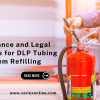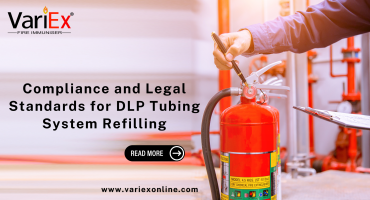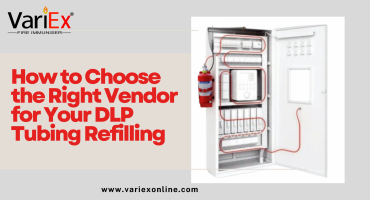![]()
Fire Immuniser
+91-7829629111
Email: info@variex.in
Varistor Technologies Pvt. Ltd.
Block-1, First Floor, Ardente Office One, Hoodi Circle, ITPL Main Road, Bengaluru, Karnataka 560048, IN
Top 10 Myths About Novec Fire Suppression Refilling Debunked
Top 10 Myths About Novec Fire Suppression Refilling Debunked
When it comes to clean agent fire suppression, Novec 1230 is one of the most trusted names in the industry. Used widely in data centers, control rooms, hospitals, and museums, it offers fast, residue-free fire suppression without damaging sensitive equipment. But when it comes to refilling Novec systems, there are several myths and misconceptions that often lead to poor maintenance decisions, delays, or even costly system failures.
In this blog, we’re debunking the top 10 myths about Novec fire suppression refilling — and setting the record straight with facts that every safety officer, facility manager, and business owner should know.
✅ Why Refilling Matters
Before jumping into the myths, let’s quickly understand why timely and correct refilling of Novec 1230 systems is so important:
Ensures readiness for fire emergencies.
Prevents costly downtime and equipment loss.
Maintains compliance with NFPA 2001, ISO 14520, and local fire codes.
Keeps warranties and insurance policies valid.
🔥 Top 10 Myths About Novec Fire Suppression Refilling – Debunked
Myth #1: Refilling Isn’t Needed Unless There's a Fire
Fact: Even if the Novec system hasn’t discharged due to fire, agent loss can still occur due to minor leaks, temperature fluctuations, or accidental activation. Regular inspections and timely refilling are necessary to maintain system pressure and agent levels.
Myth #2: Any Technician Can Refill the System
Fact: Novec 1230 refilling must be performed by trained and certified professionals. Improper handling can lead to incorrect pressure, non-compliance with standards, and potential system failure during emergencies.
Myth #3: You Can Use Any Clean Agent for Refilling
Fact: Only Novec 1230 fluid (FK-5-1-12) should be used in systems designed for it. Substituting it with other agents like FM-200 or CO₂ can void certifications and damage the system.
Myth #4: Refilling Can Be Delayed Indefinitely
Fact: Delaying a refill increases the risk of system failure during a fire. In many regions, fire codes mandate refilling within a specified time frame after discharge or pressure drop.
Myth #5: Novec 1230 Systems Never Leak
Fact: While Novec systems are robust, they are still pressurized vessels and can develop leaks over time, especially at valve seals or pipe connections. Routine leak testing is essential.
Myth #6: Refilling Is Too Expensive to Justify
Fact: While Novec 1230 is a premium agent, the cost of not refilling—equipment loss, downtime, and compliance violations—is far higher. Also, prices have become more competitive as demand and supply increase globally.
Myth #7: You Don’t Need to Test the System After Refilling
Fact: After refilling, a full system test is recommended. This ensures correct pressure, working nozzles, and readiness in case of emergency.
Myth #8: One Refill Lasts Forever
Fact: Even without discharge, Novec 1230 systems should be inspected at least annually and refilled as needed. Over time, pressure can drop, and agent levels can fall below safe thresholds.
Myth #9: You Can Store Unused Novec Cylinders Anywhere
Fact: Novec cylinders must be stored in cool, dry, and secure environments. Improper storage can lead to degradation, leaks, or even hazards during refilling.
Myth #10: Novec Refilling Doesn’t Need Documentation
Fact: Refilling activities must be documented for compliance with NFPA, ISO, and insurance guidelines. Logs should include refill date, agent volume, technician details, and system test results.
📊 Table: Common Novec Refilling Myths vs. Reality
| Myth | Reality |
|---|---|
| Refilling is only needed after fire | Leaks or drops in pressure also require refilling |
| Any technician can refill | Only certified experts should handle refilling |
| Any clean agent works | Only FK-5-1-12 (Novec 1230) is compatible |
| Refilling can wait | Delays can lead to system failure and legal issues |
| Novec systems don’t leak | Leaks can occur at valves, joints, or seals |
| Refilling is too costly | Cost of failure is much higher |
| No post-refill test needed | Testing ensures system readiness |
| One refill is enough for life | Regular inspections and refills are necessary |
| Storage conditions don’t matter | Improper storage can damage the agent |
| No documentation needed | Proper records are required for compliance |
🔧 Best Practices for Novec 1230 Refilling
Schedule routine inspections (at least once a year).
Use only OEM-approved refill stations and original Novec 1230 fluid.
Keep detailed records of all refills and tests.
Train your team on post-discharge protocols.
Don’t ignore low-pressure warnings or leaks — act immediately.
🏢 Who Needs Novec Refilling the Most?
Novec 1230 is commonly used in sectors where both equipment and data are irreplaceable:
Data centers
Banks and financial institutions
Telecommunication hubs
Healthcare facilities
Art galleries and museums
Marine vessels and aircraft hangars
Power control rooms
For these environments, system uptime, zero damage, and human safety are top priorities — making timely refilling non-negotiable.
🌍 Environmental Impact: Is Refilling Eco-Friendly?
Yes. Novec 1230 is a green alternative to traditional agents like Halon or HFCs. It has:
Zero ozone depletion potential (ODP)
Global warming potential (GWP) of 1
Atmospheric lifetime of just 3 to 5 days
Proper refilling ensures the agent is used efficiently, without leaks or waste, supporting sustainable fire protection.
Conclusion: Refilling is Essential—Don’t Let Myths Misguide You
Refilling your Novec 1230 fire suppression system is not optional—it’s a critical part of keeping your fire safety infrastructure reliable, compliant, and ready for emergencies. By debunking these common myths, we hope you now have a clearer picture of what’s fact and what’s fiction.
Whether you’re running a data center, managing critical infrastructure, or maintaining compliance in high-value spaces, remember this: An unfilled Novec system is just as bad as having no system at all.
So don’t delay — schedule that refill, trust certified professionals, and keep your people, property, and peace of mind protected.
Frequently Asked Questions
If discharged, immediately. Otherwise, inspect annually and refill when pressure drops or leakage is detected.
Yes, but only by certified technicians using approved refill kits and methods.
Typically, 1–3 hours depending on the number of cylinders and system complexity.
Often yes, but confirm with your service provider. It may be an add-on in some cases.
No. Use only fresh, in-date, and certified Novec 1230 fluid for safety and compliance.
Final Say
At VariEx.in and VariexOnline.com, we specialize in supplying and installing top-quality fire fighting systems and equipment. From fire extinguishers to advanced suppression systems, we offer comprehensive solutions tailored to your needs. Our experienced team ensures precise installation and maintenance for optimal safety.
Trust VariEx for reliable fire protection. Contact us online or call 7829629111 to learn more.
We specialize in manufacturing, supplying, and distributing a comprehensive range of fire fighting equipment, including state-of-the-art fire extinguishers. Read our most searched blogs and find interesting information on topics such as how to use a fire extinguisher, how to calculate fire fighting water tank capacity, fire extinguisher refilling, obtaining a Fire NOC, understanding fire fighting systems, types of fire protection systems, the fire hydrant system, and the fire sprinkler system. These resources provide essential knowledge for ensuring safety and compliance with fire safety regulations. Additionally, you can explore guides on the maintenance of fire protection equipment, the latest advancements in fire safety technology, and best practices for fire risk assessment and management.
Our expertise extends to fire alarm systems, fire hydrant systems, and fire suppression systems, including fire sprinklers. Each product meets rigorous international standards for reliability and performance, ensuring effective fire safety products tailored to diverse applications and industries. Additionally, we are providing Fire Extinguisher Refilling and AMC services to ensure ongoing maintenance and operational readiness of fire safety equipment.
"WHAT YOU CAN READ NEXT"
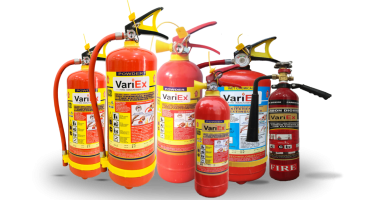 Read more +24 November 2023 in Fire Extinguisher
Read more +24 November 2023 in Fire ExtinguisherWhat types of fire extinguishers are available for different fire classes?
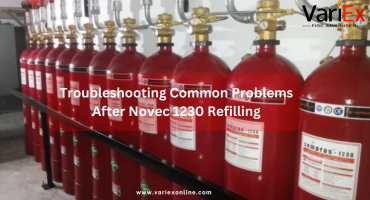 Read more +18 April 2025 in Fire Suppression
Read more +18 April 2025 in Fire Suppression



